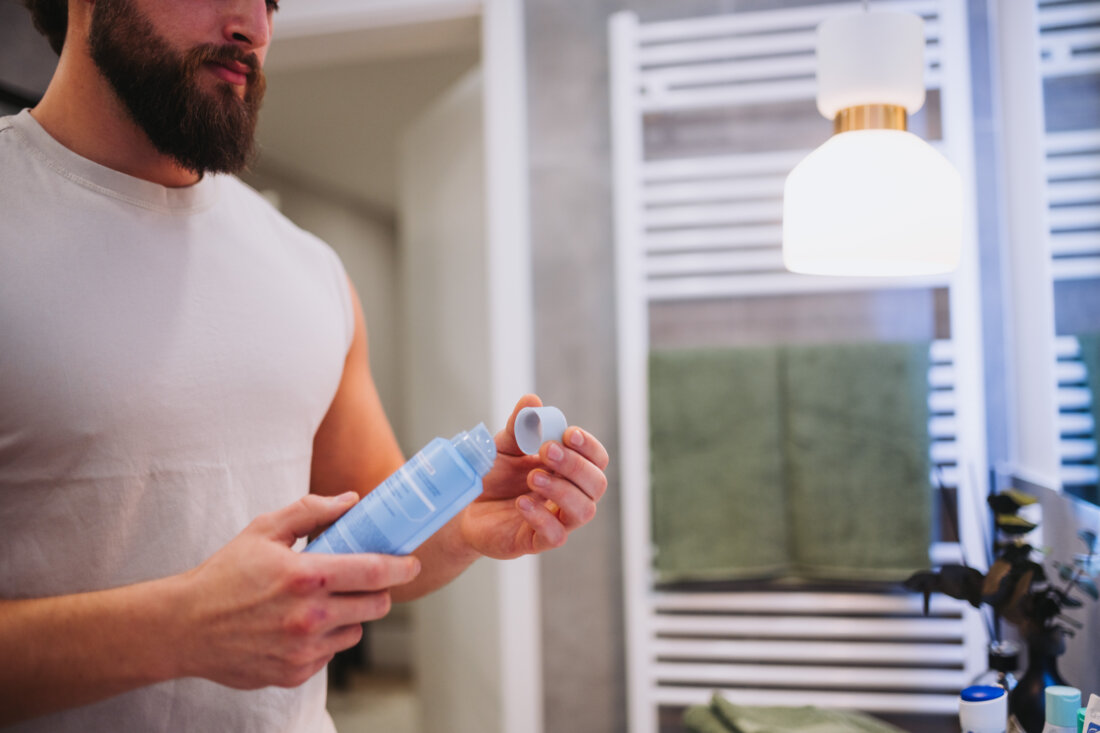CosPaTox, which stands for Cosmetics, Packaging, and Toxicology, is a consortium of European companies from across the cosmetics and home care packaging value chain. This includes Borealis, as a polyolefin producer, along with recyclers, packaging producers, and recognized consumer brands like Colgate-Palmolive, dm, and Estee Lauder. It also involves a number of academic partners and analytic laboratories. Together, we’re working to support stakeholders to qualify post-consumer recycled (PCR) material for cosmetic applications and detergents packaging.
CosPaTox has recently published its voluntary industry guidelines on the safe use of recycled plastics in these sensitive applications.

Philip Knapen, Marketing Manager for Consumer Products Rigid at Borealis, explains the significance for the industry and consumers.
CosPaTox was established in 2021, emerging from #ForumRezyklat, an initiative of dm-drogerie markt. Its main goal is to support the safe use of PCR plastic in cosmetics and detergent packaging. Until now, there haven’t been any clear guidelines—the closest thing was food-contact approval— and this lack of clarity has made brands naturally cautious. Yet, with the EU's Packaging and Packaging Waste Regulation (PPWR) set to take effect and growing consumer demand for sustainable packaging, there’s an urgent need to use a broader range of PCR plastics. CosPaTox is supporting this by establishing much-needed safety standards.
At Borealis, we’re dedicated to accelerating the transition to a circular economy for plastics, and one of the ways we’re doing this is through our Borcycle™ M and Borcycle™ C portfolios of mechanically and chemically recycled plastics. These high-quality materials can replace virgin plastics in a lot of applications, but it’s crucial that this is done safely. This is where our work with CosPaTox comes in—by bringing together toxicology experts as well as the entire cosmetics packaging value chain, CosPaTox is providing clarity on which types of PCR can be safely used in which applications.

CosPaTox ensures safe usage of PCR in cosmetics and home care packaging
© Borealis
The purpose of the guideline is to support companies to increase the use of PCR plastics in their packaging, moving us further down the road to a circular economy.
They do this by providing standardized, voluntary safety evaluation guidance that brands, as well as everyone else in the supply chain, can use to assess the use of recycled materials in different cosmetics and household packaging applications.
Based on extensive analytical testing and toxicological assessments, the guidelines establish a detailed safety profile for different types of PCR polyethylene (PE) and polypropylene (PP) materials. This profile is then used to categorize the materials according to their appropriateness for use in different exposure scenarios–leave-on, rinse-off, and detergents.
The guidelines set the most stringent requirements for packaging for leave-on cosmetics, with slightly more relaxed standards for rinse-off cosmetics, and the most lenient for detergent products. This system ensures that the highest risk products meet the highest safety standards.
The guidelines also provide a novel test method for analyzing PCR and establish state-of-the-art toxicological risk assessment principles for the entire value chain. This harmonizes the market, enabling all stakeholders to speak the same language.
In addition, they define basic quality management practices for recyclers, which is essential for increasing the use of PCR in line with the upcoming PPWR quotas. This comprehensive approach helps maintain consistency and safety across all stages of production and use.

CosPaTox brings together various stakeholders to qualify PCR for cosmetic applications and detergents packaging
© Borealis
We haven’t yet tested all of our recyclates against the standards in the guidelines, but we’re extremely confident in their quality. Some of our Borcycle M grades have already been cleared for use in contact sensitive applications such as cosmetics, so we expect they’ll also meet the CosPaTox standards.
By bringing together polyolefin producers, recyclers, packaging producers, equipment producers, additive suppliers, and analytical labs with brand owners, we gain access to a broad pool of knowledge and expertise, and we also get a clear overview of the possibilities and the challenges. This is also the philosophy of our EverMinds™ platform, which seeks to accelerate action on circularity by uniting the entire value chain.